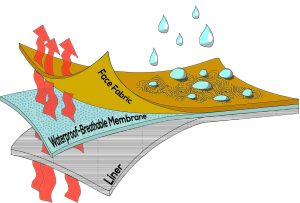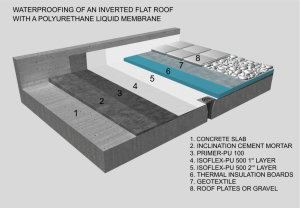Choosing the Right Level of Waterproofing: How Many Layers Do You Need?
Waterproofing is a critical aspect of construction, especially in areas prone to heavy rainfall or where water damage is a constant threat. The effectiveness of waterproofing largely depends on the number of layers applied to a structure. But the question remains: How many layers of waterproofing do you really need?
The Basics of Waterproofing
Before delving into the layers, let’s understand the basics of waterproofing. The primary purpose of waterproofing is to prevent water from penetrating into the structural elements of a building. This includes the roof, walls, foundation, and other vulnerable areas. Without proper waterproofing, water infiltration can lead to structural damage, mold growth, and a host of other issues.

The Single-Layer Approach
At its most basic level, waterproofing can be achieved with a single layer of waterproofing material. This approach is often suitable for less vulnerable areas or as a temporary solution. Single-layer waterproofing is commonly used in small projects where cost and simplicity are key considerations.
However, it’s essential to note that a single layer may not provide adequate protection in areas with high water exposure or where long-term durability is crucial. The effectiveness of this approach depends on the quality of the waterproofing material and the specific conditions of the environment.
The Two-Layer Strategy
Moving up the hierarchy, the two-layer strategy involves applying two separate layers of waterproofing material. This approach offers an added layer of protection, which can be beneficial in areas with moderate water exposure. The first layer acts as the primary barrier, while the second layer provides an extra level of defense.
Two-layer waterproofing is a common choice for residential and commercial buildings in regions with average rainfall. It strikes a balance between cost and effectiveness, providing enhanced protection without being overly complex. This strategy is often employed in roofing systems, basements, and other critical areas susceptible to water damage.
The Three-Layer Approach
For areas facing heavy rainfall or where water damage is a significant concern, the three-layer approach is a prudent choice. This advanced strategy involves the application of three distinct layers of waterproofing material. Each layer serves a specific purpose, collectively forming a robust defense against water infiltration.
The first layer acts as the primary barrier, repelling water and preventing it from reaching the underlying structure. The second layer enhances the waterproofing system’s resilience, providing an additional shield against water pressure and environmental stressors. The third layer serves as a backup, ensuring that even if the first two layers are compromised, there is still a level of protection in place.

Factors Influencing Layer Selection
Several factors should be considered when determining the appropriate number of waterproofing layers for a specific project:
Climate and Rainfall: Regions with heavy rainfall may require additional layers for effective waterproofing. For all sydney waterproofing specialists click here.
Structural Vulnerability: The type of structure and its vulnerability to water damage influence the choice of layers. For example, basements and foundations may require more layers than above-ground structures.
Budget Constraints: The number of layers chosen should align with the project’s budget constraints. While more layers offer enhanced protection, they also come with additional costs.
Long-Term Goals: Consider the long-term goals of the project. If durability and longevity are top priorities, opting for a multi-layer waterproofing approach may be more beneficial.
Conclusion
In the realm of waterproofing, the number of layers applied is a crucial determinant of a system’s effectiveness. The decision on how many layers to use should be based on a thorough assessment of the specific project’s needs, environmental conditions, and budget constraints.
While a single-layer approach may suffice for some situations, the added protection provided by multiple layers is often a wise investment. The two-layer strategy strikes a balance between cost and effectiveness, while the three-layer approach offers a robust defense against even the most challenging water exposure scenarios.
Ultimately, the goal of waterproofing is to safeguard the structural integrity of a building and prevent the costly and disruptive consequences of water damage. By carefully considering the factors influencing layer selection, you can make an informed decision that ensures your waterproofing strategy meets the unique requirements of your project.

